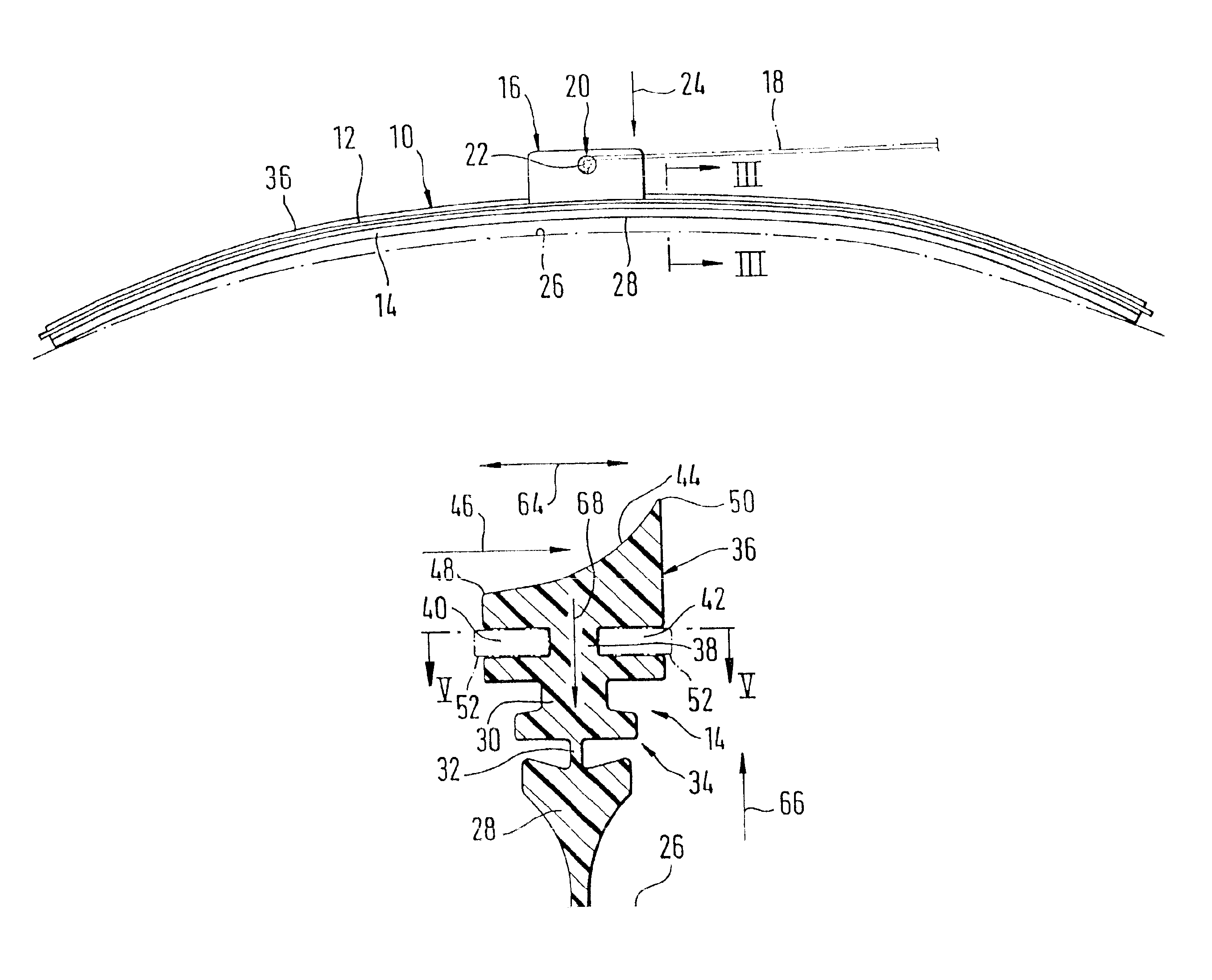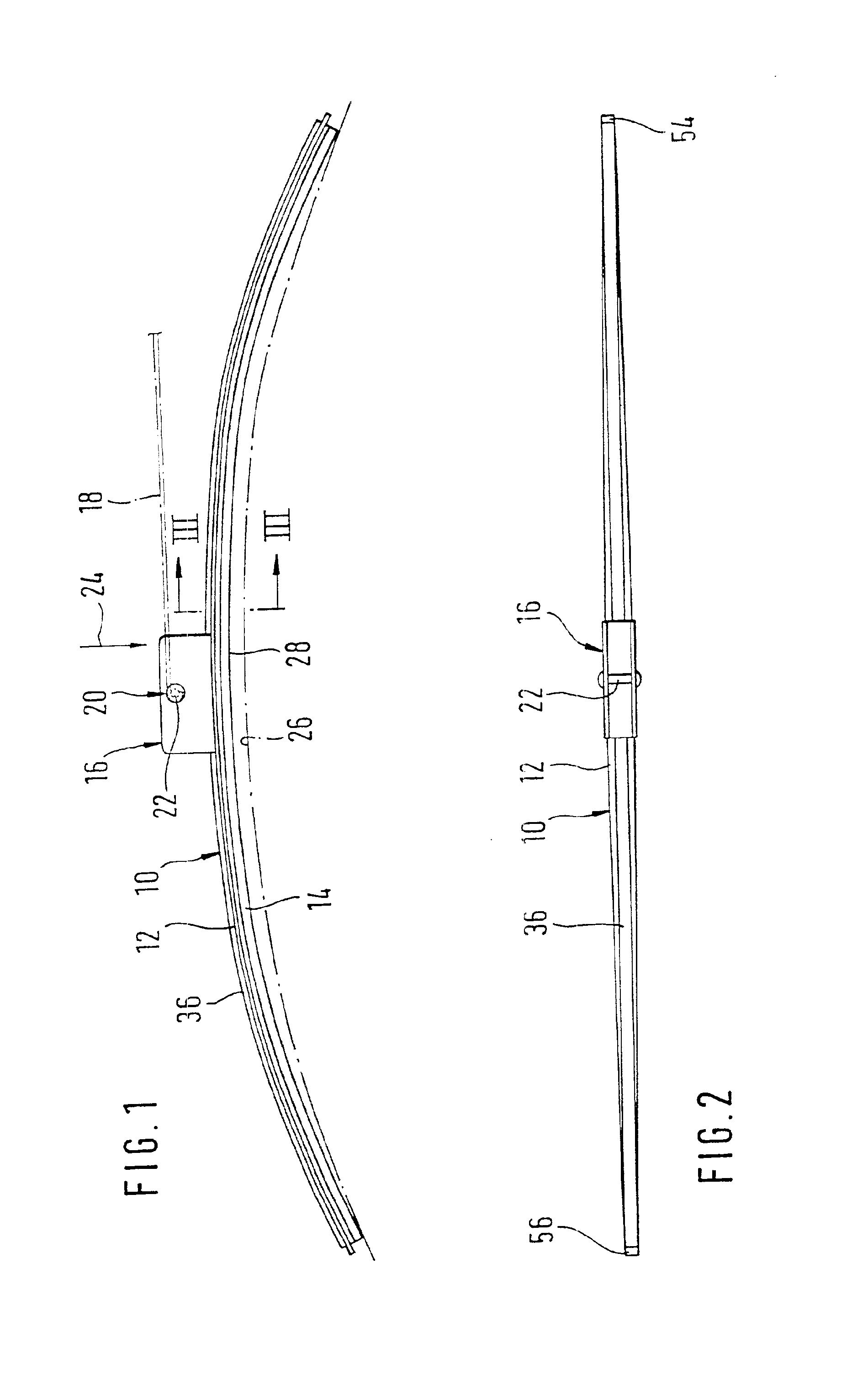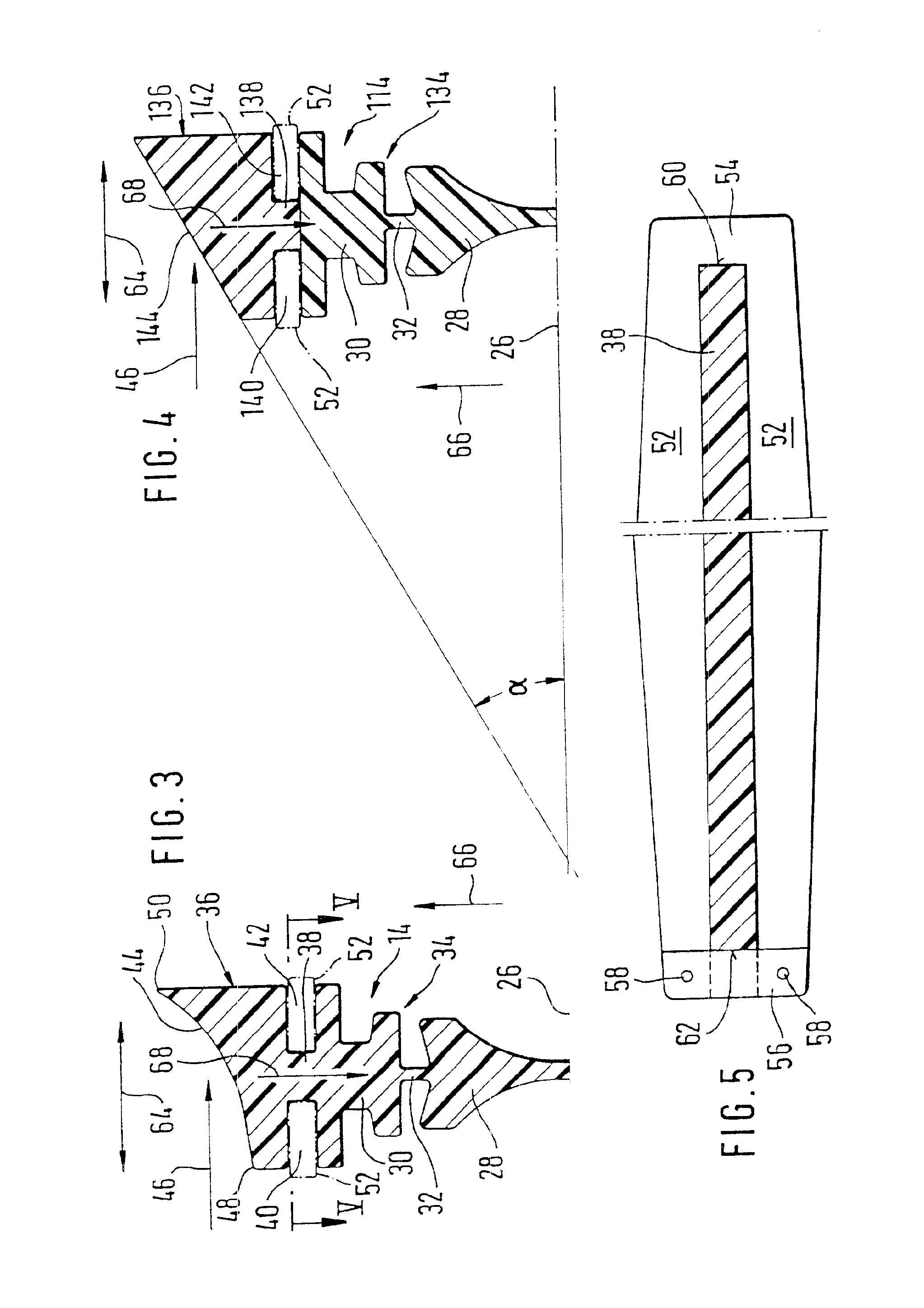Wiper blade for windows of motor vehicles
a technology for windows and motor vehicles, applied in vehicle maintenance, vehicle cleaning, domestic applications, etc., can solve the problems of inability to properly wipe, reduce contact pressure, and build up of negative pressur
- Summary
- Abstract
- Description
- Claims
- Application Information
AI Technical Summary
Benefits of technology
Problems solved by technology
Method used
Image
Examples
Embodiment Construction
A wiper blade 10 shown in FIGS. 1 and 2 has a multi-part, elongated, spring-elastic support element 12, to which an elongated, rubber-elastic wiper strip 14 is secured longitudinally axially parallel to it. The support element 12 in unloaded condition is curved upper surface 13 which follows its curvature from behind a plane which, when the wiper blade 10 is placed on the window to be wiped, extends parallel to a window surface 26. Furthermore, the support element 12 has a concave lower side 15. The support element 12 also has two legs 17 which have upper sides defining the plane provided by the support element.
A connection device 16 is disposed on the top side of the support element, and with its aid the wiper blade 10 can be detachably connected to a driven wiper arm 18. A hook acting as a counterpart connection means is formed onto the free end 20 of the wiper arm 18 and grasps a pivot pin 22 that belongs to the connection device 22 of the wiper blade. The securing between the wi...
PUM
 Login to View More
Login to View More Abstract
Description
Claims
Application Information
 Login to View More
Login to View More - R&D
- Intellectual Property
- Life Sciences
- Materials
- Tech Scout
- Unparalleled Data Quality
- Higher Quality Content
- 60% Fewer Hallucinations
Browse by: Latest US Patents, China's latest patents, Technical Efficacy Thesaurus, Application Domain, Technology Topic, Popular Technical Reports.
© 2025 PatSnap. All rights reserved.Legal|Privacy policy|Modern Slavery Act Transparency Statement|Sitemap|About US| Contact US: help@patsnap.com



